2/1/2023 11:14:34 AM
Deputy Commissioner Evan Rowe
February is Low Vision Awareness Month, a time to raise awareness about the resources available to those who need to adapt when losing their vision due to age or other reasons. I recently had the chance to spend two hours with Kia Yang and Charlene Guggisberg, two of DEED's State Services for the Blind (SSB) staffers who provide trainings to Minnesotans who are blind, DeafBlind, or losing vision. Over 92,000 Minnesotans have some sort of visual impairment, and this number is expected to grow in the years ahead. Last year, SSB provided or paid for over 3,800 Minnesotans to receive training in adapting and adjusting to vision loss.
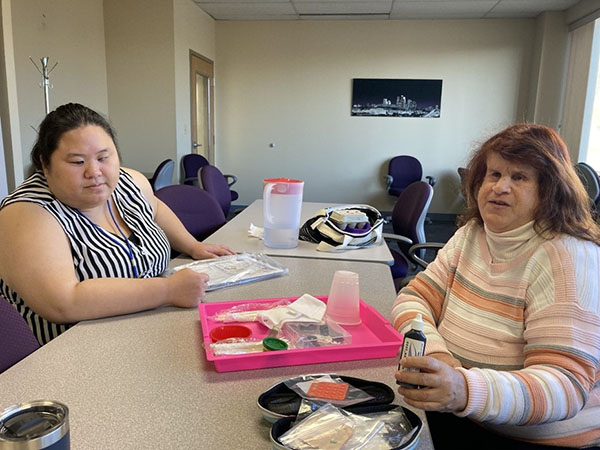
Kia and Charlene took me through a very abbreviated version of Low Vision training, and shared a few of the skills, tools, and techniques that Minnesotans who are blind or visually impaired use in their daily lives. Kia and Charlene are exceptional teachers who are remarkably patient – even with clumsy Deputy Commissioners!
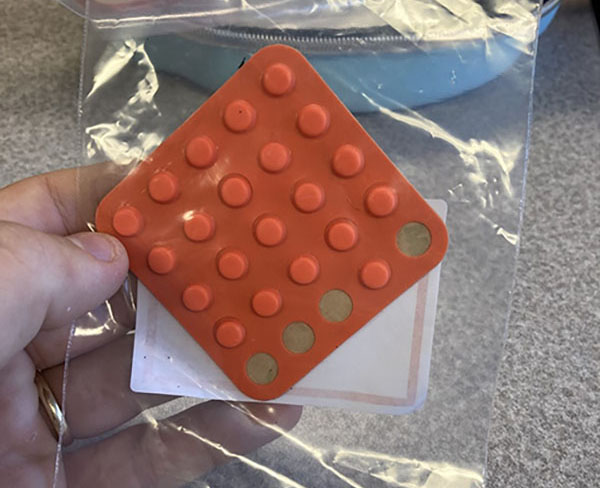
If you're adapting to vision loss, you have to learn how to identify everyday objects. There are a variety of ways to do this, but one of the most popular are bump dots. You can stick these on clothing, appliances, or other frequently used objects for both identification and directional orientation. (For example, you might put one above the "minute plus" button on your microwave so you know which button is which.)
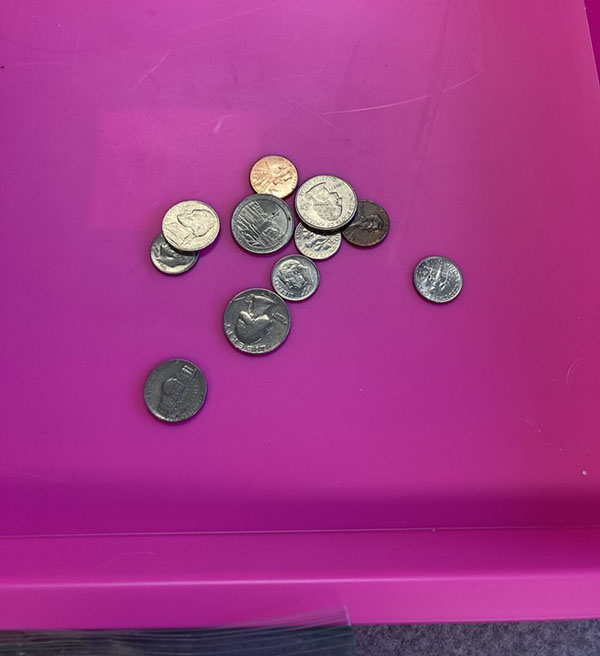
Counting change is another skill to build. For this, I put on a blindfold and sorted the coins above into type. If you're used to doing this with the aid of your eyes, it takes a while! The trick is that all coins have a unique size and edge combination. Dimes and pennies are about the same size, but dimes have ridged edges and pennies have smooth edges.
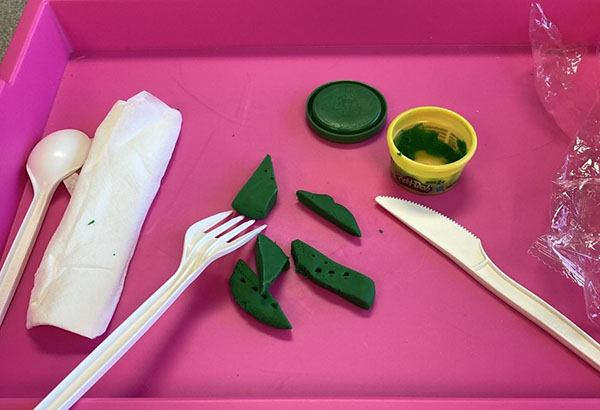
Another critical skill: cutting up food with a fork and knife. Kia and Charlene broke out the Play-Doh and plastic cutlery for this one! You use your fork and knife as a guide to push up against the border of the food, and then cut from there.
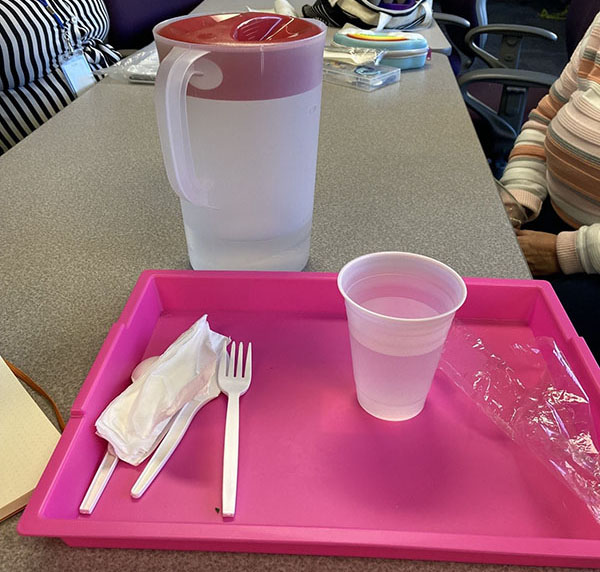
Pouring: not easy. And potentially very dangerous if you are working with hot liquids. Here, you have to take your time to learn where the spout is (assuming it isn't boiling water), and listen to the filling of the cup – the tone changes as the liquid gets to the top of the cup.
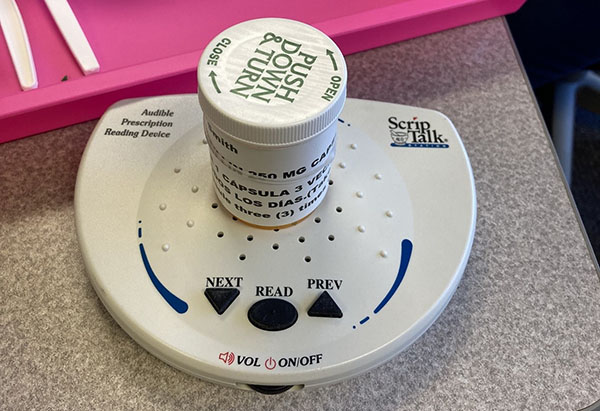
Charlene and Kia showed me some cool technologies, like this prescription reader which uses an RFID tag to audibly read the prescription drug instructions.
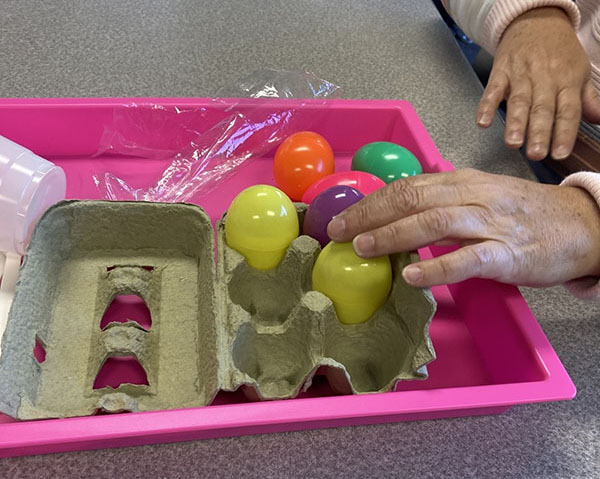
I also got a very quick introduction to the Braille alphabet using this half of an egg carton and plastic eggs (each Braille character, or "cell," is made up of six raised dot patterns). Access to information is critically important, of course, and SSB's Communication Center transcribes textbooks, books, manuals and much else in audio, braille, and e-text.
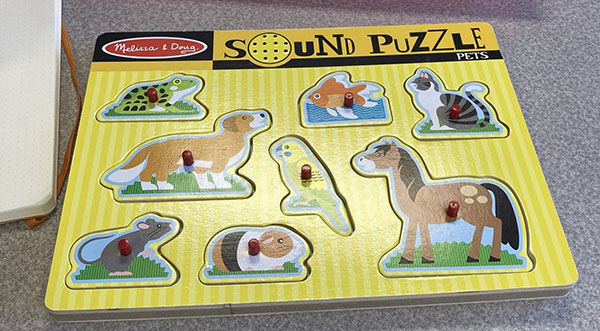
And we closed with this puzzle, which was by far the hardest task for me. If you don't have the use of your eyes, finding where each shape goes is not easy – even with sound. By the time I completed the puzzle I had come to despise those cute little animals and all their complex shapes. It was a great tool to learn about the challenges – and frustrations – a person often has to overcome to adapt to vision loss.
This was a fun and informative walkthrough of work that is truly life-changing. Charlene, Kia, and the rest of the SSB team serve thousands of Minnesotans each year, helping them live, read, and work more independently. Every person's experience is different: some are adapting to vision loss as part of aging; others are seeking to learn new skills to help them move into or retain a job. Whatever the circumstance, the SSB team works hard to provide training and support that meets each individual's needs.
Governor Tim Walz and Lieutenant Governor Peggy Flanagan's One Minnesota Budget includes $4 million in each biennium (2024-2025 and 2026-2027) for the SSB program. These resources will maximize the program's federal match and enable the program to keep pace with operational increases due to inflation, as well as expand services to reach more Minnesotans who are blind, visually impaired, DeafBlind, or have a print-related disability.